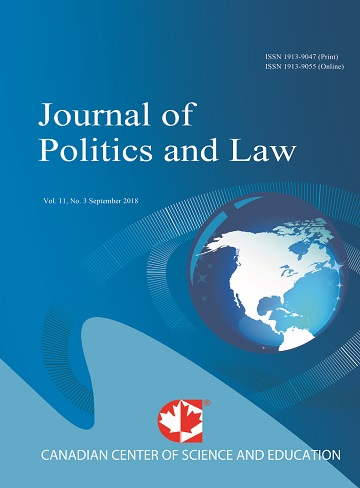Using Arbitration for Resolving Foreign Investment Disputes: A Comparative Study of Laws on Arbitration in Ghana and China
- Shirley Ayangbah
- Liu Sun
Abstract
International Investment in recent times is seen as one of the fastest-developing areas of international law. In the past decades, there has been a dramatic increase in the number of bilateral investment treaties and other agreements with investment related provisions that grant foreign investors important substantive and procedural rights, including, most importantly, the right to sue individuals, organizations and even the state hosting their investment for violations of customary international law and treaty obligations. Dispute becomes an inevitable phenomenon as individuals, organizations and countries continue to engage in foreign investment and as such there is the need for dispute solving mechanism to resolve such disputes as and when they arises. Even though there are several dispute solving mechanisms, arbitration seems to be a well-established and widely used mechanism to end dispute probably due to the efficiency and flexibility nature of it. The laws governing arbitration differ from one country to the other and it is for this reason that investors need to be abreast with the different arbitration laws so as to enable them make inform decisions as to whether to resort to arbitration or not. This paper analyses the arbitration laws of The Republic of Ghana and Peoples Republic of China in a comparative manner by drawing on the similarities and difference with respect to arbitration laws and procedure in these two countries. The paper is divided into three parts. The first part of this paper gives a brief background as well as the characteristics of the concept of arbitration. The second part looks as the similarities and difference of arbitration between the selected countries, and the final part looks at the arbitration phase and post arbitration phase of the two countries.
- Full Text:
 PDF
PDF
- DOI:10.5539/jpl.v9n7p1
Journal Metrics
h-index (2017): 14
i10-index (2017): 39
h5-index (2017): 9
h5-median (2017): 11
Index
- Academic Journals Database
- ACNP
- ANVUR (Italian National Agency for the Evaluation of Universities and Research Institutes)
- Berkeley Library
- CNKI Scholar
- COPAC
- CrossRef
- DTU Library
- EBSCOhost
- Elektronische Zeitschriftenbibliothek (EZB)
- EuroPub Database
- Excellence in Research for Australia (ERA)
- Genamics JournalSeek
- GETIT@YALE (Yale University Library)
- Ghent University Library
- Google Scholar
- Harvard Library
- HeinOnline
- INDEX ISLAMICUS
- Infotrieve
- Jisc Library Hub Discover
- JournalGuide
- JournalTOCs
- LOCKSS
- MIAR
- Mir@bel
- NewJour
- Norwegian Centre for Research Data (NSD)
- Open J-Gate
- PKP Open Archives Harvester
- Publons
- Pubmed journal list
- RePEc
- ROAD
- Scilit
- SHERPA/RoMEO
- Standard Periodical Directory
- Stanford Libraries
- UCR Library
- Ulrich's
- UniCat
- Universe Digital Library
- UoS Library
- WorldCat
- Zeitschriften Daten Bank (ZDB)
Contact
- William TaiEditorial Assistant
- jpl@ccsenet.org
